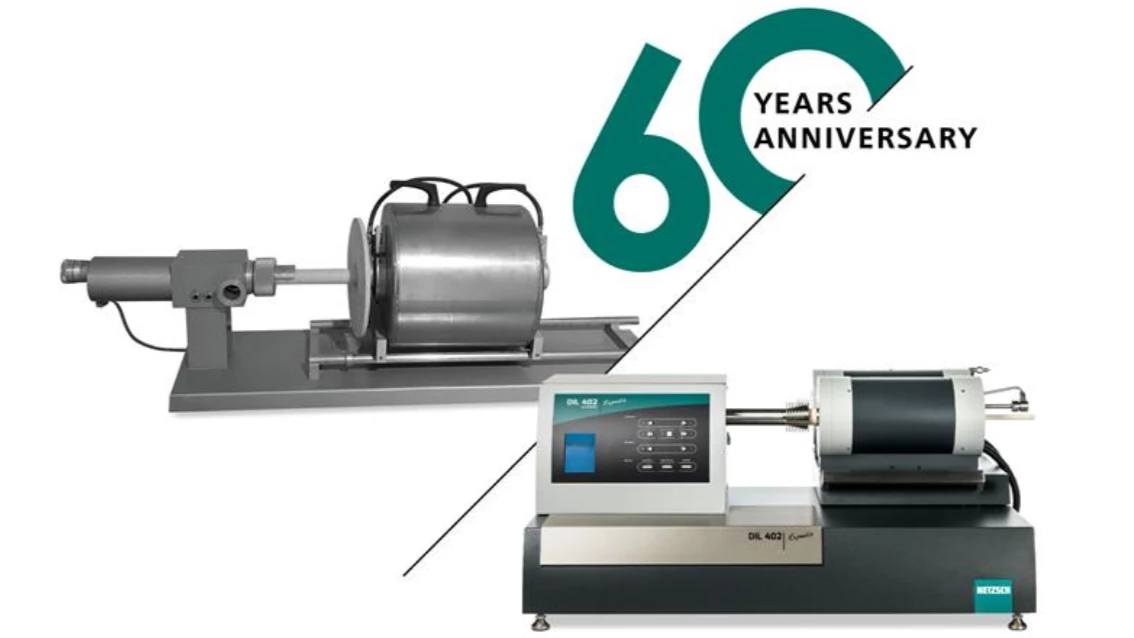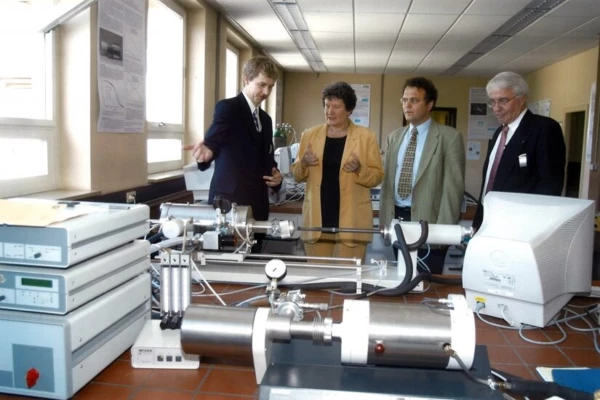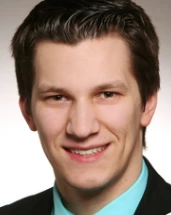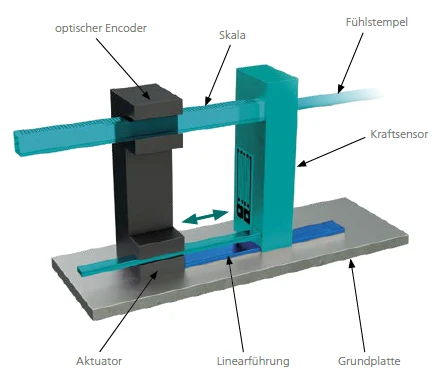
17.01.2022 by Aileen Sammler
60 Years of NETZSCH-Gerätebau GmbH – Our Dilatometer – Part II
As part of our communication campaign regarding 60 years of NETZSCH-Gerätebau, January is all about the dilatometer. Find out today, what our Managing Director Dr. Jürgen Blumm researched in his dissertation in connection with the dilatometer and how the patented NanoEye measuring system revolutionized dilatometry.

As part of our communication campaign, January is all about the dilatometer. Find out today, what our Managing Director Dr. Jürgen Blumm researched in his dissertation in connection with the dilatometer and how the patented NanoEye measuring system revolutionized dilatometry. And don’t forget to take part in our raffle.
The Dilatometer as Part of the Dissertation of Managing Director Dr. Jürgen Blumm
In 1995, Jürgen Blumm started his career at our applications laboratory. Through a research project on sinter optimization in cooperation with the Julius-Maximilians-Universität Würzburg, he dedicated his dissertation to the subject “Thermal Characterization of High-Performance Ceramics before, during and after the SinteringSintering is a production process for forming a mechanically strong body out of a ceramic or metallic powder. Sintering Process”. The measurement methods expanded upon and combined within the scope of his doctoral thesis allowed for a completely new approach to the analysis of the SinteringSintering is a production process for forming a mechanically strong body out of a ceramic or metallic powder. sintering process. The kinetic simulation calculations made a pioneering contribution to process optimization in the SinteringSintering is a production process for forming a mechanically strong body out of a ceramic or metallic powder. sintering of ceramic materials. Jürgen Blumm was one of the first to research multiple-step SinteringSintering is a production process for forming a mechanically strong body out of a ceramic or metallic powder. sintering kinetics in connection with the dilatometer (DIL).

Excerpt from Dr. Jürgen Blumm’s dissertation:
“In the production of high-performance ceramics, the powdery starting material is offset with additives (binders, SinteringSintering is a production process for forming a mechanically strong body out of a ceramic or metallic powder. sintering additives) in most cases. Then, the powder is transformed into a green body by means of a molding process (e.g., pressing). Solidification of the material then takes place via a SinteringSintering is a production process for forming a mechanically strong body out of a ceramic or metallic powder. sintering process, in which the powder particles are bonded together and porosity is reduced. SinteringSintering is a production process for forming a mechanically strong body out of a ceramic or metallic powder. Sintering usually follows as part of a heat treatment, whereby the temperature control during the process has a decisive influence on the structural properties of the ceramic.
In many areas of industry today, the methods of computer-aided modeling and optimization of the manufacturing process for materials and components are employed. For example, simulation programs for optimization of solidification processes in casting technology have been widely used for years. In the production of ceramic components, however, these methods are not yet established.… By measuring the length changes via dilatometry and subsequent thermokinetic evaluation of the measured data, it is possible to gain insights into the complex processes and courses of reaction during the SinteringSintering is a production process for forming a mechanically strong body out of a ceramic or metallic powder. sintering process which would not have been achievable with mere expansion measurements. The use of thermokinetic analysis additionally offers the possibility of optimizing densification of a ceramic material via computer-aided simulations.”
Those who would like to find out more details about the dissertation of our Managing Director Dr. Jürgen Blumm should plan to keep an eye out for our September feature on Laser Flash analysis (LFA).
The PatentedNanoEyeMeasuring System: A Revolution in Dilatometry
Who still remembers? In the past, length changes were detected by means of an inductive displacement transducer. This analog measuring principle exhibited disadvantageous non-linearities and had to be calibrated manually on a recurring basis. Today, our patented NanoEye measuring system features a linearity of 100%. Calibration is no longer needed since this is carried out by the manufacturing process of the measuring system. In 2015, we introduced the revolutionary new concept of the measuring system in dilatometry by means of the DIL Expedis® series. The NanoEye measuring system that was newly integrated at that time was based on the interaction of an optoelectronic measuring sensor and the application of force, which was precisely controlled with the help of an actuator. From then on, it was possible to apply a constant force, irrespective of the expansion or shrinkage of the sample, of between 10 mN and 3 N. Until then, it was also impossible to increase the measuring range while maintaining the same resolution. NanoEye offers a resolution, previously unachievable, of up to 0.1 nm over the entire measuring range of up to 50 mm – with perfect linearity.

“Additional technically important properties of the patented measuring system include the friction-free expansion, the force control loop, and the increase in measuring range with simultaneously high resolution and reduction of operator influence by means of the automatic sample length measurement,” explains Dr. Fabian Wohlfahrt, Head of Mechanical Development at NETZSCH-Gerätebau.
But not only did NETZSCH make the determination of the expansion behavior more accurate, it also simplified the process of correct sample insertion prior to the start of the measurement. The MultiTouch software function helps the user to position the sample correctly after insertion. In addition, the sample length no longer needs to be determined manually. Today, the DIL takes care of all these tasks automatically.
